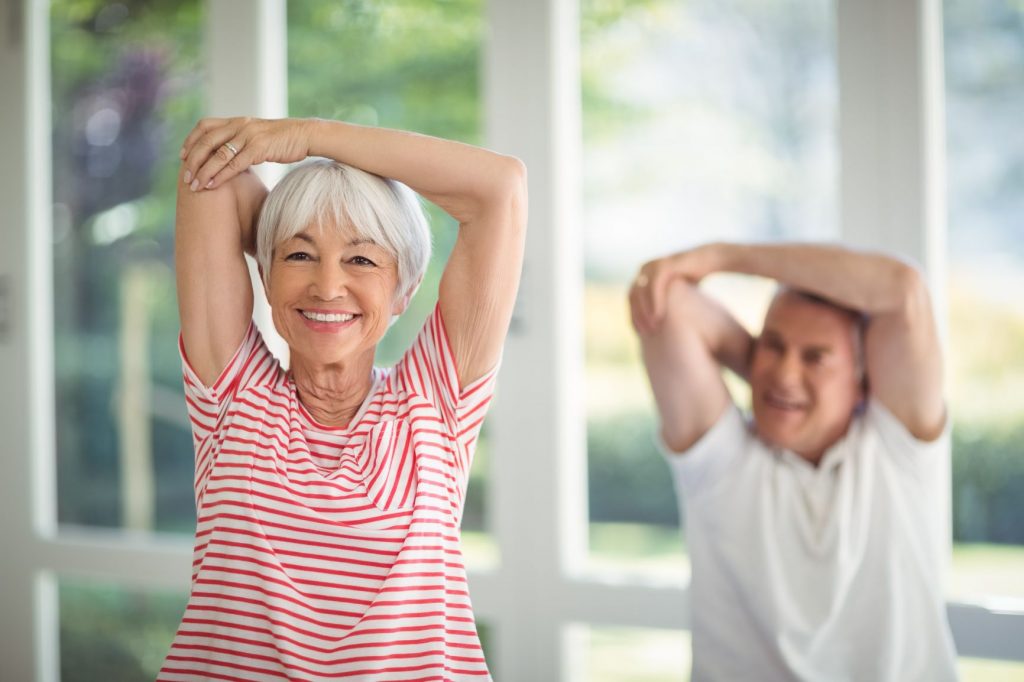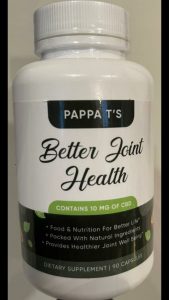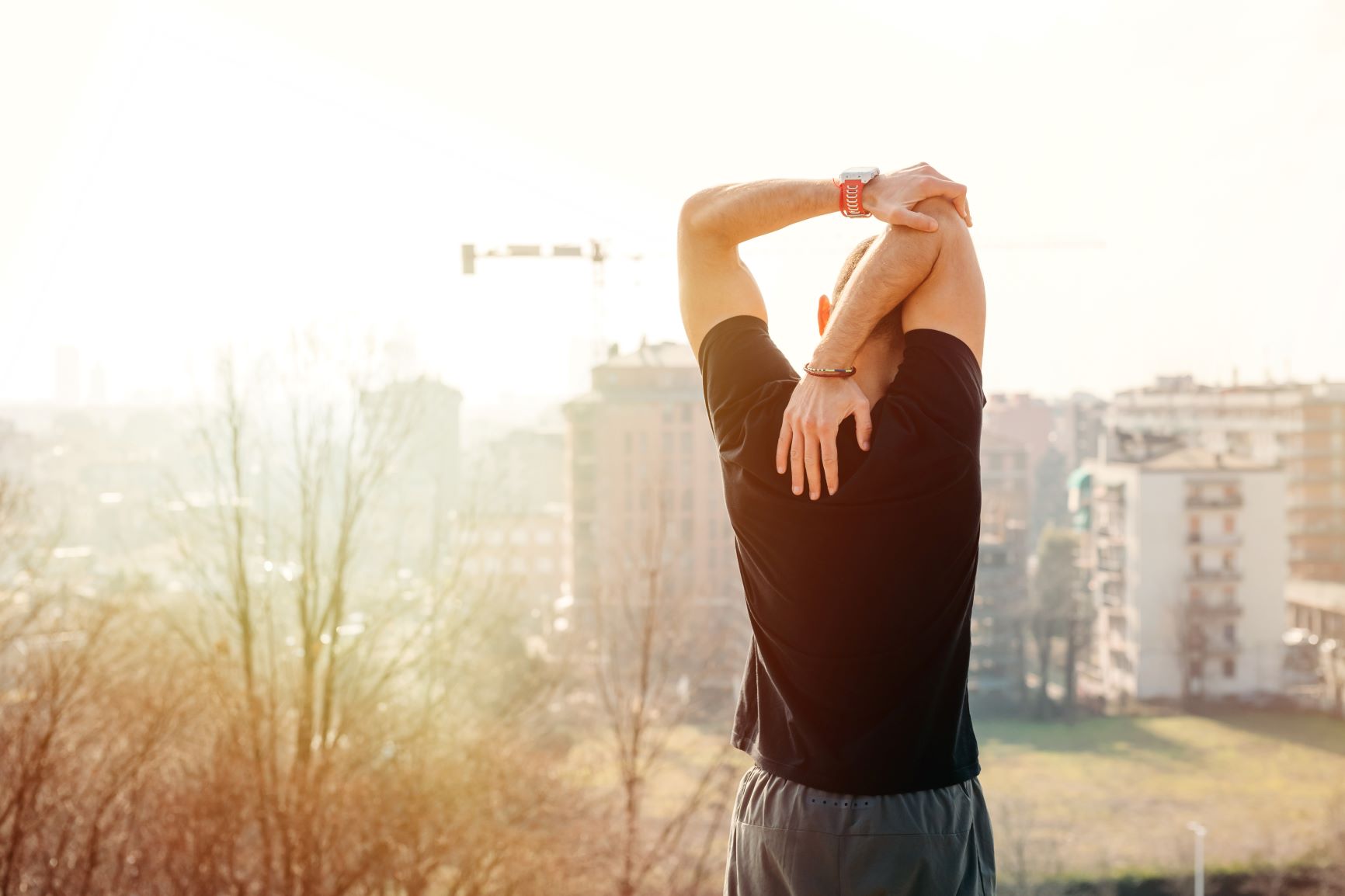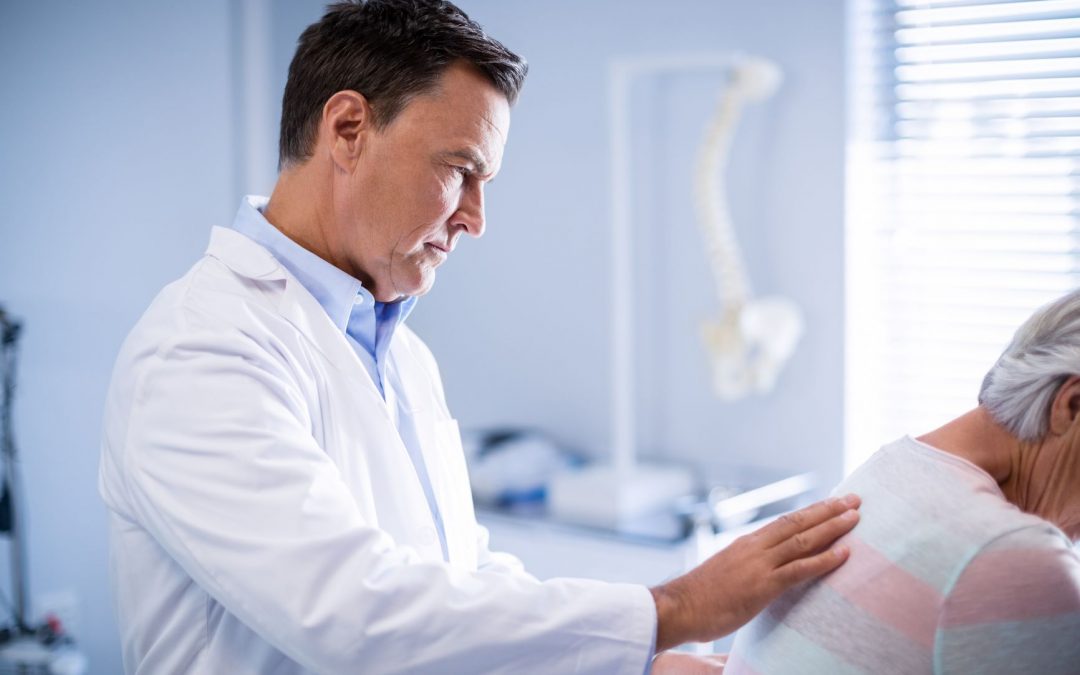When it comes to pain relief upper back, the first step in relieving pain in the upper back is understanding why it happens. Upper back pain is usually caused by soft tissue injuries, such as sprains, strains, and muscle tension triggered by poor posture. Upper back pain affects everyone differently and that’s because there are so many possible reasons for upper back pain. Pain in the upper back is less common than in the lower back, hip, or neck. A lot of studies have shown that about two-thirds of people get to experience lower back or neck pain, which is somewhat higher for the lower back and a little lower for the neck, compared to less than one-fifth recorded for upper back pain.
The upper back is the area below the neck (cervical spine) and above the lumbar spine (low back). The upper back is also called the thoracic spine, and it is the most stable part of the spine. The range of motion in the upper back is limited because of the spine’s attachments to the ribs (rib cage). Think the spine is likened to a tree trunk because it carries the weight of the upper body, helps you stand upright, and connects parts of your skeleton. As a result of that huge task, the spine itself shares some of the physical load with nearby muscles, some of which includes; Trapezius (near your shoulder blade; it helps you stand straight, and be able to throw things), Latissimus dorsi (lower on your back, it helps with the arm movement and breathing), Rhomboids (adjacent to trapezius, it supports your shoulders and helps you pull things).
When you injure your upper or mid-back during an activity, there is a higher chance that you’ve injured one of these muscles. Reginald Knight, MD, Director of Bassett Spine Care Institute in Cooperstown, New York, reported that the most common reason we see people with upper back pain is as a result of a simple musculo-skeletal strain. Spinal cord injury is less common, though possible, especially due to traumatic injury among any age group, or osteoporosis (bones dwindling as a result of lack of calcium) in people older than sixty-five years.
The spine is a vertebra (long column of bones; part of the backbone) that are separated by discs that act as shock absorbers. The discs are firm but not solid, with a cartilage exterior and a gel-like core. The spinal column protects the spinal cord which has nerves that carry messages from the brain to other parts of the body. The nerves also poke out from spaces between the vertebrae. Even though you might think of the spine as one long structure, doctors see it as three shorter ones; the cervical spine (neck), thoracic spine (upper and mid-back), and lumbar spine (low back). The thoracic spine moves very differently from the cervical and lumbar spine. It doesn’t move a lot. The thoracic spine is connected to the ribs and sternum making it rigid and stable, so it’s less prone to injury. That’s one of the reasons that upper back pain is likely to be related to muscles, and not the spine.
If you injure your upper back during daily or weekend-warrior activity, you might experience pain, tightness, stiffness, tenderness to touch, headache, etc. These are typical symptoms of musculoskeletal strain, and they can and often occur with spinal injury. If your upper back pain is related to the bones, nerves, or discs of your thoracic spine, your symptoms may also include pain in the lower back, pain down the legs, incontinence (bowel and/or bladder leakage), numbness or weakness in your legs. For mild upper back soreness that you can easily link to an activity, there’s no need for a medical examination, but when you have upper back pain along with other symptoms, then it’s called for a medical examination to help you determine the next steps to take.
In most cases, upper back pain is not a cause for concern. However, it can be discomforting, painful, and inconveniencing. If pain develops suddenly and is severe, maybe from an injury (example: a fall) and accompanied by symptoms such as weakness progressively worsened with time, you should seek medical attention.
The Various Ways of Relieving Pain in The Upper Back
Most cases of upper back pain resolve in one or 2 weeks without medical treatment. It is best to resume your normal activities gradually when you can perform them without discomfort or pain. Don’t rush things though, you could disrupt your recovery and risk getting injured again. Surgery, exercises, and home remedies are noted to relieve pain in the upper back.
Surgery: The idea of spinal surgery can be scary, but oftentimes it is the most reliable way of getting relief from pain in the upper back. Surgery is seldom indicated for isolated upper back pain. This is almost always due to an issue with the spine itself such as a herniated disc, vertebral fracture, or deformity.
A need for upper back surgery is rare, but if that happens, these are some of the most common procedures for thoracic spine injury:
Microdiscectomy: When a disc bulges and presses on a nerve, microdiscectomy which involves the minimally invasive removal of a disc or portion of a disc) is the standard procedure for it.
Spinal Decompression or Spinal laminectomy: If you have spinal stenosis which is the narrowing of the spinal canal, bony walls of the vertebrae may be removed to ease pressure on the nerves.
Vertebroplasty or Kyphoplasty: To repair compression fractures due to osteoporosis, an injection of glue-like bone cement may be done by a surgeon.
Some Exercises That Help to Relieve Upper Back Pain
Muscle tension in the shoulders can also lead to neck stiffness and headaches, so it is advisable not to discard upper back pain when it happens. Upper back pain and muscle tension are common when people feel stressed or spend a lot of time hunched over a desk or computer. Exercises that stretch the neck, shoulders, and upper back can help with pain relief upper back and loosen tight muscles.

Regular stretching can relieve upper back pain and help in preventing a recurrence There are several exercises and stretches for easing upper back pain, and some of these exercises may require the use of an exercise mat instead of performing them on a hard floor(s).
Exercises for easing and preventing upper back pain:
- Cat-Cow Pose
- Child’s Pose
- Wall stretch
- Trunk rotation
- Shoulder roll
- Neck flexion
- Overhead arm reach
- Knee-to-chest
- Thoracic extension
Cat-Cow Pose: Begin on all fours, the hands should be underneath the shoulders and the knees directly beneath the hips. Slowly arch the back upward, pushing down through the shoulders and dropping the head to the chest. Hold it for a few seconds, then release it. Return to the starting position, but continue to drop the lower back toward the floor. Gently move the head back so that the chin and nose are pointing upward, hold it for a few seconds, then release it. Repeat this 5-10 times.
Child’s Pose: Begin in the Table Pose but bring the big toes together, slowly lower the hips toward the floor placing the buttocks on top of the feet. While doing this, bring the chest down to rest on the thighs and the forehead down to touch the floor. Stretch the arms out in front with the palms touching the floor. Remain in this position for several breaths or as long as feels comfortable pushing through the arms. Slowly return to a sitting position, instead of extending the arms forward; a person can also try placing the arms backward beside their thighs, but the palms should be facing upward. Another one is to stretch the right arm forward while threading the left arm under the right arm to the side while rotating the head to face it. Repeat this stretch on the other side. This variation creates a gentle rotation and twist motion in the back and shoulders.
Wall stretch: Stand with the right side of the body facing a wall, bend the right arm at the elbow and place the forearm against the wall. The upper arm should be completely straight so that the elbow forms an angle of 90 degrees. Gently take a step forward with the right foot and twist to the left, allowing the right shoulder and upper back to stretch. Hold the stretch for a few seconds, then return to the starting position. Repeat the stretch several times on both sides to experience some pain relief upper back.
Trunk rotation: Lie on the back with the knees bent and the feet flat, gently rotate the knees to the right, keeping them bent, hold this position for a few seconds. Return the knees to the center and repeat the stretch several times on both sides.
Simple Home Remedies for The Relief of Pain in The Upper Back
The following home remedies may help with pain relief upper back. Most people safely try to relieve pain on their own when pain develops in the upper back without signs of emergency medical attention. In some cases, a combination of one or more remedies is needed to help relieve the pain.
Some early treatment or remedy options to relieve upper back pain includes:
Better Joint Health Naturally: Click on the image below to get a bottle for yourself

Resting and modifying activities: If pain in the upper back aggravates with certain movements or activities, taking a short period of rest a day or two from it may help. For instance, if working in the yard worsens the pain, then it’s best to avoid such an activity instead of incurring more discomfort. After a certain period of rest, becoming active once more is advisable because resting for too long can cause muscles in the back to become weaker which could lead to more pain.
Having a Massage: Having a massage can provide relief from back pain. Even if the effects are momentary, a good massage can help loosen tight muscles and enable more blood to flow to the painful area. Another option for massaging the upper back includes self-massage with a foam roller or ball. Also, having a willing friend or family member to massage you is a plus, otherwise, you can seek out professional assistance.
Ice and heat therapy: Ice may be applied to reduce swelling within the first couple of days, and heat may be recommended after 2 days. Recommendations simply let the patient decide whether they find more relief from heat or ice, but regardless of which is preferred; it is important to limit their applications to 20 minutes at a time and regularly check the skin to avoid tissue damage.
Use of postural exercises: If you maintain a good posture, your spinal structures should be correctly aligned; this reduces back strain.
Hands-on healing: Physical therapy, acupuncture, and chiropractic care provides relief for upper back pain. Ask a doctor if it’s safe for you to do more than one of these at a given time.
Use of Imagery: Imagine there’s a cord passing through your body from ceiling to floor. Now imagine someone pulling that cord upward, slightly lifting your chest and ribcage.
Some risk factors from daily routines are known to increase the risk for hip. Making one or more of the following lifestyle changes could help reduce the risk of developing upper back pain:
Exercise and stay active: Going for regular walks, participating in non-contact sports, strength training, and stretching can all be helpful for conditioning the upper back. Keeping the back strong and flexible helps maintain spinal function and reduces the risk of developing discomfort. When trying to transition from a sedentary lifestyle to a more active one, start slowly and gradually build up endurance.
Practice better posture: Keeping the head in a neutral position with the ears directly over the shoulders tends to put the least amount of stress on the neck and back. Simple changes could include setting up an ergonomic workstation at work, bending with the knees when lifting heavy objects, and placing straps over both shoulders instead of just one when wearing a backpack.
Quitting of smoking: Multiple studies have shown that people who smoke are more likely to have chronic back pain and accelerated degeneration of spinal discs. One of the suspected reasons is that nicotine restricts blood flow which can reduce the flow of nutrients that goes into the discs.
Conclusion
Upper back pain and tension are common complaints, particularly when people feel stressed or spend a lot of time hunched over a desk or computer. Exercises that stretch the neck, shoulders, and upper back can help relieve pain and loosen tight muscles. Muscle tension in the shoulders can also lead to neck stiffness and headaches, so it is important not to ignore upper back pain when it happens. Regular stretching can relieve back pain and help prevent it from returning.
In this article, several stretch exercises, and home remedies for easing upper back pain are discussed. For some of these exercises to help with pain relief upper back, it may be a good idea to use an exercise mat, rather than performing them on a hard floor.
Chin tuck: Sit in a chair with your feet flat on the floor. Your shoulders should be relaxed and down, now pull your chin toward your neck, count to five and then relax. Repeat this exercise at least 10 times.
Shoulder-blade squeeze: Put your hands on your thighs and keep your shoulders down, roughly at chin level. Slowly squeeze your shoulder blades together. Count to five, then relax. Repeat these three or four times.
Upper back stretch: Raise your right arm to shoulder level, bend your arm at the elbow, and grasp that elbow with your left hand. Now gently pull it across your chest and hold it for 20 seconds. Repeat this three times on each side.

Prescription drugs: In many cases, a prescription anti-inflammatory or muscle relaxant will do the trick to ease your upper and mid back pain. If your doctor suspects depression plays a role in your pain, you may be given an antidepressant to take longer-term (months, not weeks). Opiate pain relievers may be prescribed for severe pain that isn’t helped by other painkillers, but they’re not recommended for long periods (7 to 10 days).
Finally, you may benefit from an anticonvulsant medicine; it works best for pain caused by nerve damage(s). Over-the-counter (OTC) medications; various pain medications are available at stores for purchase without a doctor’s prescription. Most of these OTC medications work by reducing inflammation in the body or preventing pain signals from reaching the brain. Common OTC medications that may help reduce upper back pain include aspirin (example: Bayer or Bufferin), ibuprofen (example: Advil or Motrin), naproxen (example: Aleve or Naprosyn), and acetaminophen (example: Tylenol). Even though these medications do not require a prescription, it is important to read and follow the directions on the label to avoid serious side effects.
Injections: A trigger point injection is a direct shot of powerful pain relief medicine. It may solve your problem, or it may just buy you enough pain-free time to pursue other interventions to get your upper back pain in check.
You can complete a stretching sequence daily to regain mobility and reduce pain. Aim for at least 10 minutes per session. Make sure you warm-up before jumping into the strengthening moves. Consider completing a 10-minute exercise to jump-start your muscles and get the blood flowing. Complete a set of strengthening moves at least 3 days a week for the best outcome. Aim for a mix of 3 moves per session. Upper back pain can be treated at home, daily stretching and regular strengthening may help you find relief, but if your pain persists or worsens with home treatment, you should consult a doctor or other health care provider; your symptoms could be tied to an underlying condition that requires professional treatment.
Muscle cramps, stiffness, and upper back pain are common worries among people. Sitting in a position for a long time, bending, or poor posture can result in upper back pain. An abnormal curvature of the thoracic spine also called Scoliosis causes back pain. However, there are many things you can do at home to relieve upper back pain. Take a break if your back hurts, but don’t rest for too long as it can cause muscle stiffness. Return to doing normal activities slowly instead, and avoid doing things that may make the pain worse. Poor posture causes stress on the back, so it is advisable not to slouch or slump.
Ensure to sit, or stand tall with the stomach pulled in to support your back. Also, try to reduce stress at work, as any form of stress can result in pain in the back. Breathing deep and relaxing exercises reduces stress, and in turn, helps in relieving the body of pain. Back pain treatment may involve medication or, in some cases surgery, but natural remedies for back pain, such as exercise, spinal manipulation, and massage are among the top recommendations for both mild, acute, and chronic cases.
A lot of people may have experienced upper back pain at some point in their lives, but not everyone understands what causes the pain. The spine consists of twenty-six bone discs called vertebrae, and these vertebrae protect the spinal cord and allow one to stand and bend. Spinal diseases or injuries often inflict pain and limit movement when bone changes put pressure on the spinal cord, spinal discs, or nerves. If you’re experiencing upper back pain, it’s critical and clinically advisable to seek professional assistance. However, there are several steps you can take to help treat pain naturally using some home remedial tips. This article contains tips and guidelines that explore some exercises, surgical and homemade remedies for the relief of upper back pain.

